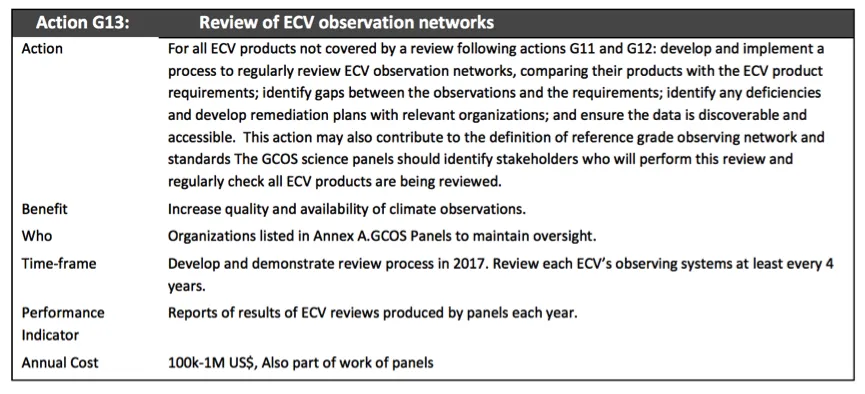Remedy 1: Further deployments and refinements of the GAIA-CLIM approach
Remedy 2: Adoption of measurement systems approach and assessment by international bodies
No systematic effort has been made to define and broadly agree amongst global stakeholders on the measurement and network characteristics underlying a systemic approach to Earth Observation. Nor is there any recognised approach in place to ensure a consistent way of assessing where any given observation sits within such a framework.
Different observational domain areas (atmospheric, composition, marine, terrestrial, cryospheric, etc.) use domain-specific, but overlapping naming conventions. These often use the same label such as ‘reference’ or ‘baseline’ to mean very different things. The unwary user is faced with an unenviable task as a result, and this yields sub-optimal and / or incorrect usage of available observational records in many cases and confusion for funders, users, and stakeholders.
This gap potentially inhibits realisation of the full benefits of an explicitly system-of-systems architecture (trickle down calibration, characterisation, etc.) across the global networks. It also places the burden of appropriate use of data squarely on the user, which is an unrealistic expectation in the majority of cases as the user is not, at least ordinarily, sufficiently expert in the nuances of observational programs (and nor should they be expected to be so).
The gap has been recognised in the most recent (2016) GCOS Implementation Plan and an action (G13 Review of ECV observational networks) associated, which speaks to elements of this gap.

The GAIA-CLIM-related activities are described in peer-reviewed literature (Thorne et al., 2017). This clearly articulates the method that GAIA-CLIM used, but does not close the gap as it is, at this stage, only an approach used by a single project. Therefore, while it shows a potential approach to solving the gap, it lacks the broad community and institutional buy-in aspects necessary to close the gap. Remaining aspects to be addressed include a broader assessment of applicability to other observational capabilities and discussion and agreement by appropriate international entities.
The resolution of the current gap will aid resolution of G1.04 by providing an assessable basis with broad buy-in to classify individual contributing measurement systems
G1.03, as well as G1.04, must be addressed after G1.06, which will provide all the required information to proceed towards an effective approach to resolving both G1.03 and G1.04.
- Global Climate Observing System GCOS 2016 Implementation Plan. https://ane4bf-datap1.s3-eu-west-1.amazonaws.com/wmocms/s3fs-public/programme/brochure/GCOS-200_OnlineVersion.pdf?PlowENiCc1RGh9ReoeAoGBT0QhnJYm6_
- Thorne, P. W., Madonna, F., Schulz, J., Oakley, T., Ingleby, B., Rosoldi, M., Tramutola, E., Arola, A., Buschmann, M., Mikalsen, A. C., Davy, R., Voces, C., Kreher, K., De Maziere, M., and Pappalardo, G. (2017) : "Making better sense of the mosaic of environmental measurement networks: a system-of-systems approach and quantitative assessment", Geosci. Instrum. Method. Data Syst., 6, 453-472, https://doi.org/10.5194/gi-6-453-2017, 2017.
There currently exists no universally recognised approach for assessing quantifiable aspects of the measurement system maturity of existing observing networks. Although absolute measurement quality cannot be assured, fundamental properties of the measurement system that build confidence in its appropriateness and metrological verity can be assessed. The lack of an agreed international framework for such an assessment leads to heterogeneity in the approaches used to select the most suitable measurement series for any given application. This frequently has deleterious effects for downstream applications in that often the measurements are used in a manner that is not optimal or even not appropriate.
